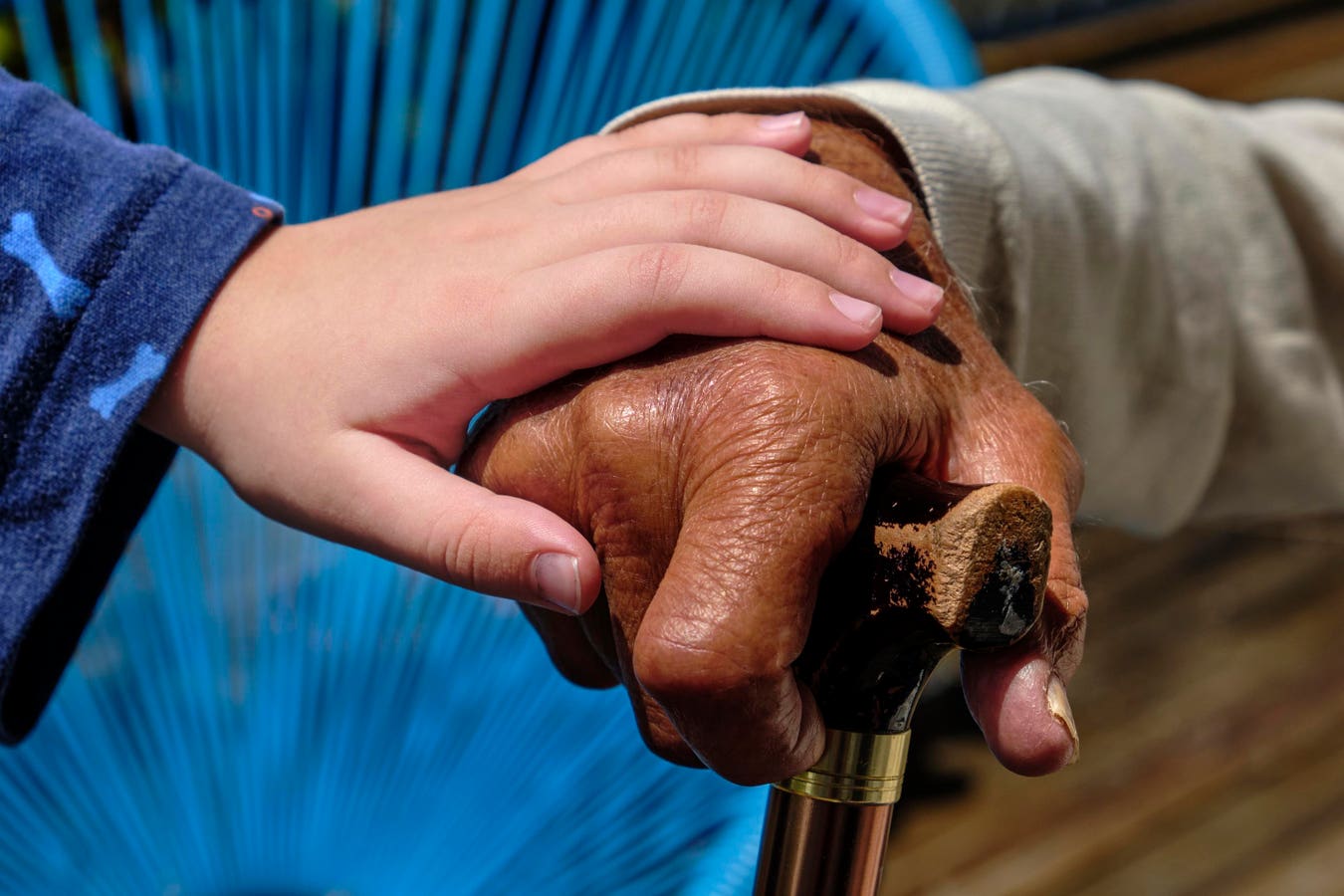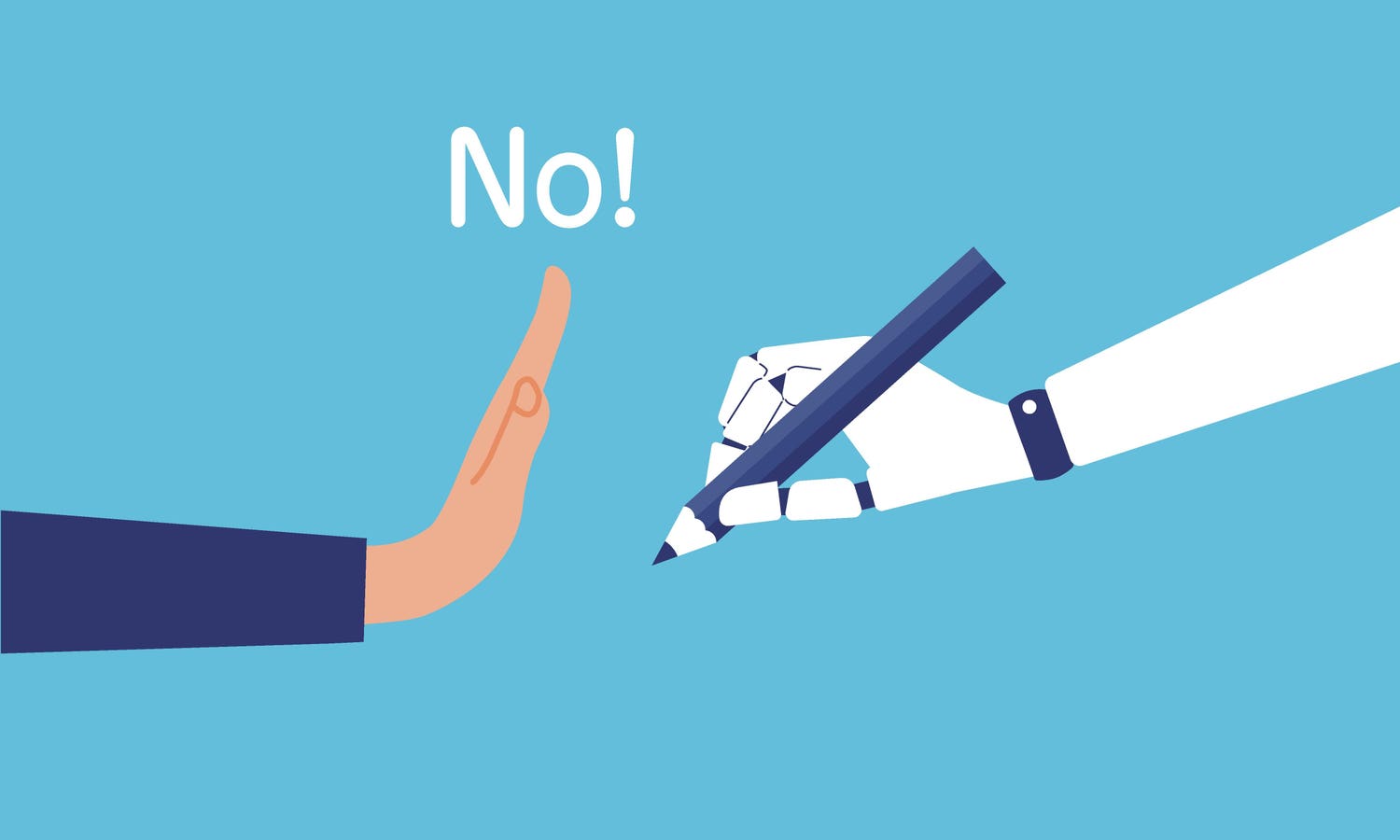Grandchild holding grandparent’s hand. Grandfather leaning on a walking stick. Dark skin toned grandfather with light skin toned grandchild. Mixed race family.
getty
As artificial intelligence reshapes our world, we find ourselves in a curious conundrum.
The same technology that promises to solve our most complex global challenges also threatens to disconnect us further from our essential human nature, and the home that we call planet earth. Being alive today is a gigantic opportunity, which comes with sharp responsibility. This era of technological acceleration presents an unexpected opportunity: to pause, recalibrate and learn from the oldest wisdom keepers on our planet.
The International Day of the World’s Indigenous Peoples, observed annually in August, reminds us that while we marvel at machine learning algorithms, the most sophisticated intelligence systems have been operating for millennia within indigenous communities worldwide. These communities have sustained themselves through cycles of environmental change, social upheaval and resource scarcity by cultivating values that artificial intelligence, for all its computational power, cannot replicate: deep interconnectedness, generational thinking and reciprocal relationships with the natural world.
An Ancient Code Of Survival
Long before Silicon Valley coined the term “network effects,” indigenous communities understood that survival depended not on individual optimization but on collective resilience. The Ubuntu philosophy of southern Africa — “I am because we are” — reflects a systems understanding that modern AI developers are only beginning to appreciate. These communities learned that cooperation, not competition, formed the foundation of sustainable progress.
Consider the potlatch ceremonies of Pacific Northwest tribes, where status derives not from accumulating wealth but from giving it away. For centuries this seemingly counterintuitive practice has created robust social networks, redistributed resources during times of scarcity and built lasting alliances across vast territories. Such practices reveal economic models that prioritize regeneration over extraction — principles that could inform how we design AI systems for collective benefit rather than individual profit maximization.
The Māori concept of Kaitiakitanga — guardianship that extends seven generations into the future — offers another lens through which to view our technological development. While AI systems optimize for immediate outcomes, indigenous frameworks inherently consider long-term consequences. Integrating such principles into AI governance could address many current ethical challenges by embedding community welfare and environmental stewardship into algorithmic decision-making.
Bridging Worlds: Indigenous Knowledge Meets AI
The convergence of ancient wisdom and artificial intelligence is not merely philosophical — it’s happening in real time across the globe. In the Arctic, where climate change threatens traditional ways of life, Inuit communities are collaborating with AI developers to create systems that combine satellite data with traditional ecological knowledge to predict ice conditions and ensure safe travel routes.
The SIKU app, developed in partnership with Inuit communities, exemplifies this hybrid intelligence. Named after the Inuit word for sea ice, the platform integrates real-time sensor data with generations of traditional knowledge about ice behavior, creating navigation tools that are both technologically advanced and culturally grounded.
In New Zealand, Te Hiku Media is leveraging AI to revitalize the Māori language, training machine learning models on indigenous speech patterns and oral traditions. Their work demonstrates how technology can serve to preserve and strengthen cultural practices for future generations. Similarly, in Polynesia, indigenous-led reef conservation projects are combining traditional marine knowledge with AI-powered monitoring systems to restore coral ecosystems. These initiatives show how artificial and indigenous intelligence can create solutions that are both scientifically rigorous and culturally appropriate.
What makes the difference in outcomes is the motivation behind the scenes. Regenerative intent matters.
Limitations Of Digital Intelligence
Despite its remarkable capabilities, AI operates within significant constraints that indigenous wisdom systems inherently avoid. Within existing data contexts, machine learning models excel; they thrive on pattern recognition tasks but struggle with the kind of adaptive, contextual intelligence that indigenous communities have evolved over centuries.
AI systems process information through narrow, predetermined frameworks, while indigenous knowledge systems embrace complexity, paradox and multiple ways of knowing simultaneously. Where algorithms seek to eliminate uncertainty, traditional knowledge systems often celebrate it as a source of resilience and adaptability.
The Navajo concept of Hózhó — living in balance and harmony with all relations — represents a form of intelligence that considers relationships, context and dynamic equilibrium rather than static optimization. Researchers are now exploring how such concepts might inform future AI development, creating systems that prioritize harmony and balance over maximum efficiency.
Lessons In Collective Intelligence
Indigenous communities have long understood that the most complex challenges require collective intelligence — the kind that emerges from diverse perspectives, intergenerational dialogue, and deep listening. The talking circles of Native American traditions, the consensus-building practices of many African communities and the collaborative decision-making processes of indigenous groups worldwide all demonstrate sophisticated forms of distributed intelligence that no single AI system can replicate.
These practices offer valuable insights for designing AI systems that amplifies our humanity and compensates for some of our quirks and caveats. They suggest that the future lies not in creating more autonomous AI but in developing technologies that facilitate better human collaboration, deeper understanding and more inclusive decision-making processes.
When it comes to human groups sometimes the whole becomes more than the some of its parts; and once we have a holistic of the entire range of our natural and artificial assets the same complementary magic might become true for our co-habitat with AI.
Toward Hybrid Intelligence
As we navigate the AI r/evolution, ancestral knowledge systems offer a roadmap for developing hybrid intelligence — systems that combine the computational power of artificial intelligence with the multidimensional individual experience and the relational wisdom of human communities. This requires double literacy: a holistic understanding of ourselves, our communities, and our planet, coupled with a clear comprehension of AI’s capabilities and limitations.
Double literacy means understanding that AI excels at data and patterns but cannot replicate human intuition, compassion or the kind of contextual wisdom that emerges from lived experience. It means recognizing that while AI can optimize for efficiency, indigenous wisdom systems optimize for resilience, relationship, and regeneration.
Most importantly, double literacy requires us to approach AI development with the same long-term thinking that characterizes indigenous cultures. Instead of asking what AI can do for us today, we must ask what kind of world we’re creating for seven generations from now.
Curating Our Technological Future
The path forward requires intentional curation of hybrid intelligence systems that harness our computational capability with regenerative intent. It encompasses the creation of AI development processes that include community voices from the beginning, not as an afterthought. It means designing algorithms that consider relational impacts alongside efficiency metrics. And it means building technological systems that boost not bust the social fabric of our communities.
Moving ahead 4 A’s Matter
Awareness of who we are, individuals and as part of a planetary citizen.
Appreciation of the opportunities and obligations that come with that citizenship in a hybrid context.
Acceptance of the limitations and strengths of both, our natural and artificial resources.
Accountability for the consequences of our choices, online and offline.
The current moment comes with a choice. We can continue developing AI systems that optimize for narrow metrics while ignoring their broader impacts on human flourishing and planetary health. Or we can learn from the world’s treasure chests of local wisdom to co-curate technologies that nurture our biggest asset – planet earth
Note – As part of a moderated series with change-makers from MIT Solve a previous article looked at Technology with respect to people and planet.









